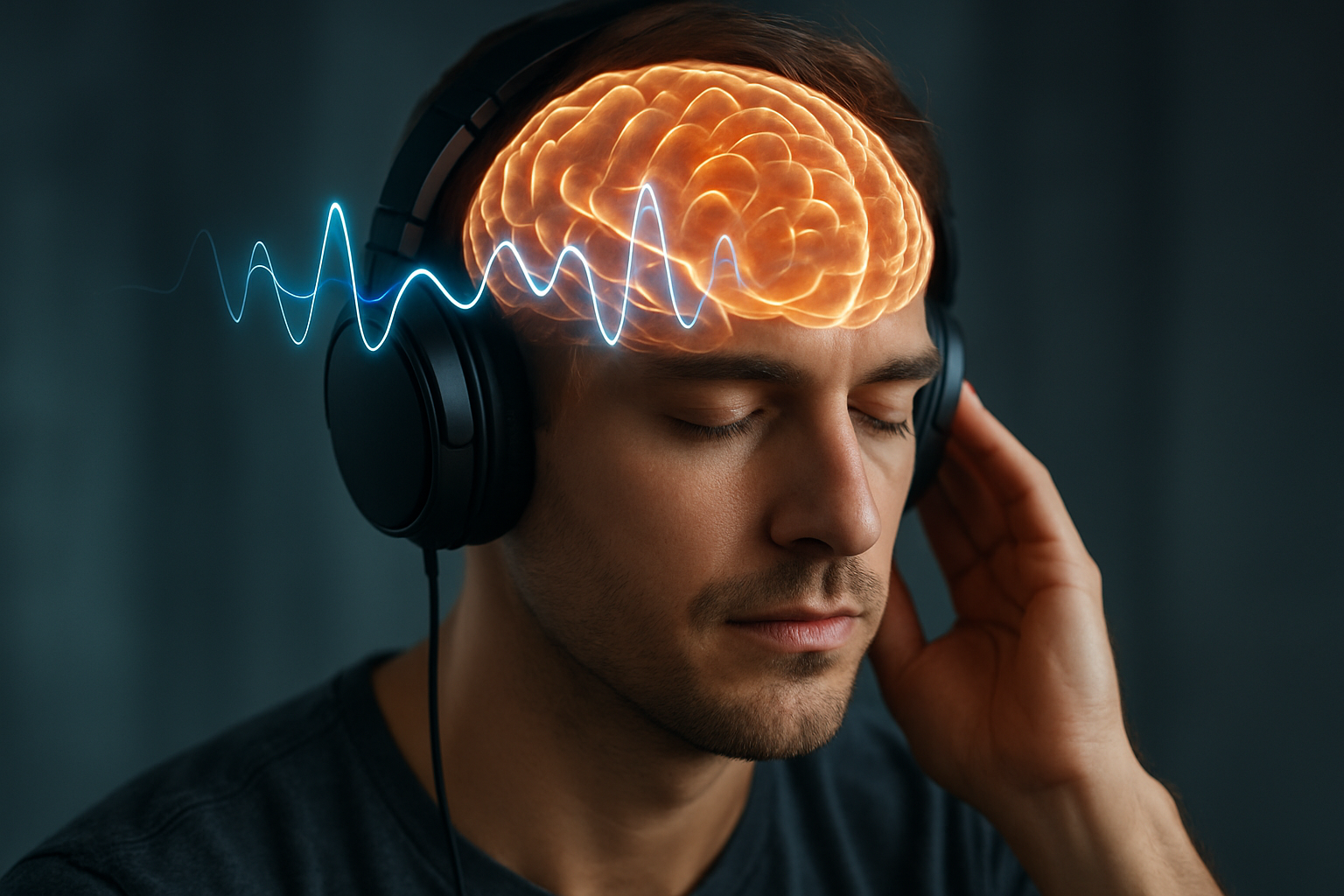Binaural Beats: A Sonic Revolution in Brain Health
Did you know that your brain's electrical activity can be influenced by sound? Imagine enhancing your focus, reducing anxiety, and improving sleep quality simply by listening to carefully crafted audio. Welcome to the world of binaural beats, a cutting-edge auditory technique that's reshaping our approach to cognitive wellness and mental health.

The Science Behind Binaural Beats
Binaural beats are an auditory illusion created when two slightly different frequencies are played separately into each ear. The brain perceives a third tone, which is the difference between these two frequencies. For example, if a 440 Hz tone is played in one ear and a 444 Hz tone in the other, the brain perceives a 4 Hz beat.
This phenomenon was first discovered in 1839 by Heinrich Wilhelm Dove, a Prussian physicist and meteorologist. However, it wasn’t until the late 20th century that researchers began to explore its potential applications in brain entrainment and cognitive enhancement.
The theory behind binaural beats suggests that this perceived tone can influence brainwave activity, potentially altering the listener’s state of consciousness. Different frequency ranges are associated with various cognitive states:
-
Delta waves (0.5-4 Hz): Deep sleep, healing
-
Theta waves (4-8 Hz): Meditation, creativity
-
Alpha waves (8-13 Hz): Relaxation, light meditation
-
Beta waves (13-30 Hz): Active thinking, focus
-
Gamma waves (30-100 Hz): Peak concentration, cognitive enhancement
Neuroplasticity and Brain Entrainment
The concept of using binaural beats for cognitive enhancement is rooted in the principle of neuroplasticity - the brain’s ability to reorganize itself by forming new neural connections. Proponents argue that regular exposure to specific frequencies can train the brain to operate more efficiently in desired states.
Research into this area has yielded intriguing results. A 2019 study published in the journal Frontiers in Human Neuroscience found that listening to binaural beats in the beta range (16 and 24 Hz) was associated with improved attention and working memory performance. Another study in the Journal of Alternative and Complementary Medicine suggested that delta-wave binaural beats might enhance sleep quality and reduce anxiety.
Applications in Mental Health and Wellness
The potential applications of binaural beats extend beyond cognitive enhancement. Mental health professionals are exploring their use as a complementary therapy for various conditions:
-
Anxiety Reduction: Some studies suggest that theta-wave binaural beats may help reduce anxiety levels.
-
Sleep Improvement: Delta-wave frequencies are being investigated for their potential to improve sleep quality and combat insomnia.
-
Pain Management: Preliminary research indicates that certain binaural beat frequencies might help in managing chronic pain.
-
ADHD Management: Beta-wave binaural beats are being studied for their potential to improve focus and attention in individuals with ADHD.
The Role of Expectancy and Individual Differences
While the potential benefits of binaural beats are exciting, it’s crucial to approach the topic with a balanced perspective. The placebo effect plays a significant role in many studies on binaural beats, and individual responses can vary greatly.
Dr. Joydeep Bhattacharya, a professor of psychology at Goldsmiths, University of London, emphasizes the importance of expectancy: “The effectiveness of binaural beats may be partly due to the listener’s belief in their efficacy. This doesn’t negate their potential benefits but highlights the complex interplay between mind and body in health interventions.”
Moreover, factors such as age, hearing ability, and personal preferences can influence an individual’s response to binaural beats. What works for one person may not work for another, underscoring the need for personalized approaches in cognitive enhancement strategies.
Integration with Other Wellness Practices
Binaural beats are not meant to be a standalone solution but rather a complementary tool in a holistic approach to health and wellness. Many practitioners recommend combining binaural beat sessions with other practices such as:
-
Mindfulness meditation
-
Breathing exercises
-
Cognitive behavioral therapy
-
Regular physical exercise
-
Balanced nutrition
This integrated approach may enhance the potential benefits of binaural beats while promoting overall well-being.
Sonic Wellness: Tips for Exploring Binaural Beats
-
Start with short sessions (15-30 minutes) to gauge your response
-
Use high-quality headphones for optimal effect
-
Experiment with different frequencies to find what works best for you
-
Combine listening sessions with relaxation techniques for enhanced results
-
Be consistent - regular use may yield better outcomes
-
Stay hydrated during and after listening sessions
-
Avoid using while driving or operating machinery
As we continue to unlock the mysteries of the brain, technologies like binaural beats offer exciting possibilities for non-invasive cognitive enhancement. While more research is needed to fully understand their mechanisms and long-term effects, the growing body of evidence suggests that binaural beats could be a valuable addition to our mental wellness toolkit. As with any health intervention, it’s essential to approach binaural beats with an open mind, realistic expectations, and in consultation with healthcare professionals when necessary. The journey to optimal brain health is a multifaceted one, and binaural beats may just be the sonic key to unlocking new levels of cognitive well-being.





